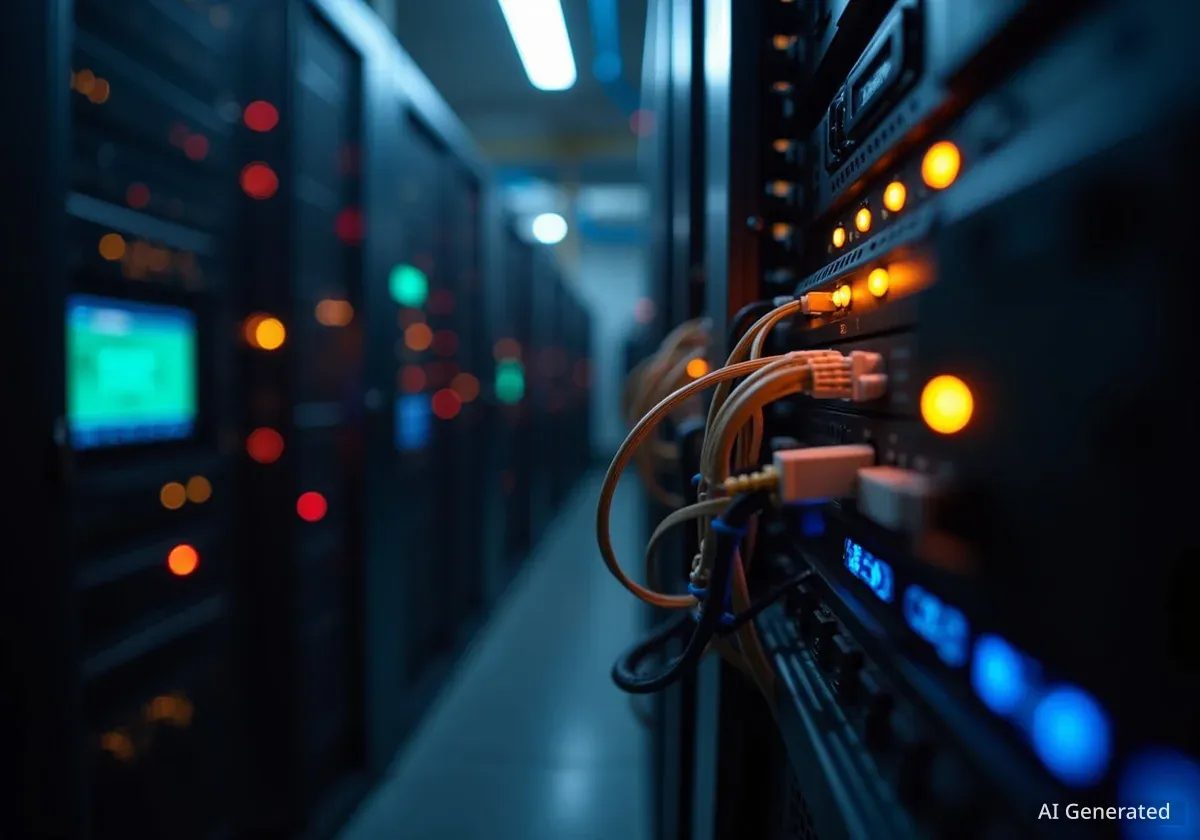A new study has revealed that the energy consumption of generative artificial intelligence, particularly text-to-video tools, increases at an unexpectedly high rate. Researchers found that doubling the length of an AI-generated video quadruples its energy demand, indicating a significant and inefficient scaling problem with current technology.
This non-linear growth in power usage suggests that the environmental footprint of sophisticated AI models is larger than previously estimated. The findings raise questions about the sustainability of the rapid expansion of generative AI tools as they become more complex and widely adopted.
Key Takeaways
- Energy use for AI video generation quadruples when the video's length doubles, a non-linear and inefficient scaling pattern.
- Generating a five-second AI video clip requires the same amount of energy as running a microwave oven for more than one hour.
- AI-related processes now account for approximately 20 percent of the total power consumed by data centers worldwide.
- Major technology companies are reporting increased carbon emissions, partly driven by investments in AI infrastructure.
The Exponential Energy Problem
Research conducted by the AI platform Hugging Face has quantified the substantial energy cost associated with creating videos from text prompts. The study's central finding is that the relationship between video length and energy consumption is not linear. Instead, it follows an exponential curve.
For example, producing a six-second video clip using a generative AI model consumes four times the amount of electricity needed for a three-second clip. This pattern suggests that as users create longer and more complex videos, the hardware requirements and environmental costs will increase at a much faster rate.
In their paper, the researchers concluded, “These findings highlight both the structural inefficiency of current video diffusion pipelines and the urgent need for efficiency-oriented design.”
To put this into perspective, the study compared the energy usage to a common household appliance. While generating a single high-resolution image (1,024 x 1,024 pixels) is equivalent to running a microwave for about five seconds, the demands for video are orders of magnitude higher.
Video vs. Image Energy Cost
According to the research, creating a standard five-second AI video clip consumes an amount of energy equivalent to operating a microwave continuously for over 60 minutes. This highlights the significant difference in computational resources required for video compared to still images.
A Widening Gap in Understanding
Experts warn that the rapid deployment of generative AI tools is outpacing a comprehensive understanding of their true environmental impact. An analysis by MIT Technology Review noted that the common perception of AI's energy consumption is incomplete and often underestimated.
The issue extends beyond individual models to the entire technological ecosystem. The infrastructure required to train and run these powerful AI systems is immense. A recent study indicated that AI-related energy usage already represents 20 percent of global datacenter power demands, a figure expected to grow as AI adoption continues.
The Infrastructure Buildout
Technology giants are investing tens of billions of dollars to expand their data center capacity to support the growing demand for AI services. This massive infrastructure expansion requires significant resources, from construction materials to the vast amounts of electricity and water needed for operation and cooling. This buildout is a primary driver of the industry's increasing carbon footprint.
This expansion is creating tension between technological advancement and corporate climate commitments. Companies that have set ambitious environmental goals are now facing the challenge of reconciling them with the energy-intensive nature of AI development.
Corporate Climate Goals Under Pressure
The push for AI dominance is having a measurable effect on the environmental performance of major tech companies. In its 2024 environmental impact report, Google disclosed that it was falling behind on its goal to achieve net-zero carbon emissions by 2030.
The report revealed a 13 percent year-over-year increase in the company's carbon emissions, a surge attributed in large part to its embrace of generative AI technologies. This demonstrates a direct conflict between rapid AI scaling and long-term sustainability objectives.
Google's recently released Veo 3 AI video generator serves as a case study. The company announced that users created more than 40 million videos with its tools in just seven weeks. While this indicates strong user adoption, the total environmental cost of generating this content remains undisclosed. Given the research findings on energy scaling, the impact is likely substantial.
The Search for Efficient Solutions
Despite the challenges, researchers are exploring methods to mitigate the high energy demands of generative AI. The Hugging Face paper suggests several potential strategies to improve efficiency:
- Intelligent Caching: Storing and reusing parts of previously generated content to avoid redundant computations.
- Reusing Generations: Modifying existing AI-generated assets instead of creating new ones from scratch whenever possible.
- Pruning Datasets: Identifying and removing inefficient or redundant examples from the data used to train AI models, which can help streamline the learning process.
These technical optimizations aim to reduce the computational load without compromising the quality of the output. However, it is not yet clear if these efficiency measures can be implemented fast enough to offset the explosive growth in AI usage and model complexity.
The ongoing development of more powerful AI models continues to push the boundaries of hardware and energy resources. As the industry moves forward, balancing innovation with environmental responsibility will become an increasingly critical challenge for developers, corporations, and policymakers alike.





